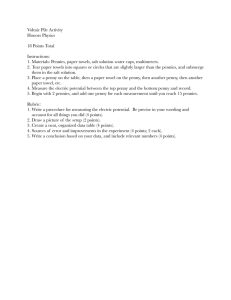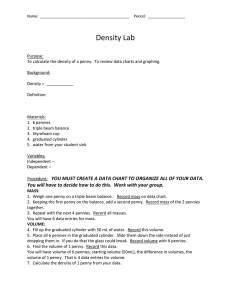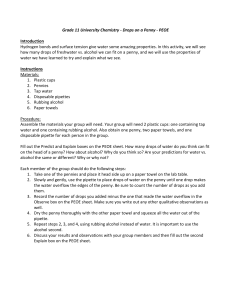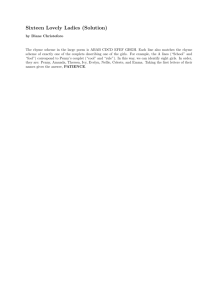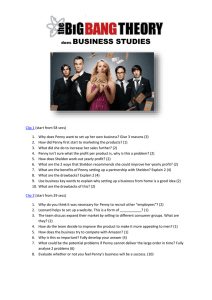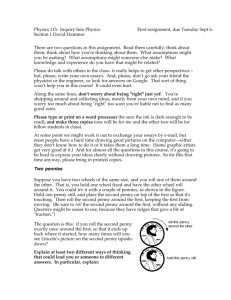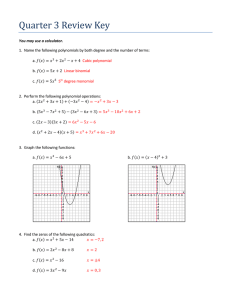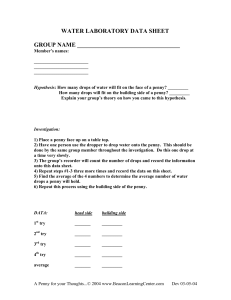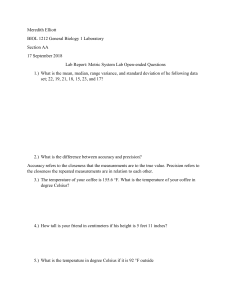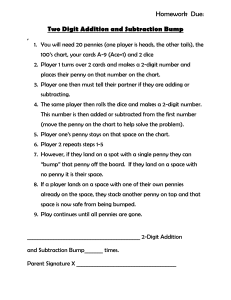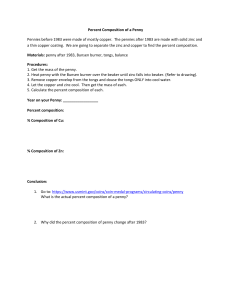NateSci6.30 - BreakthroughScience
advertisement
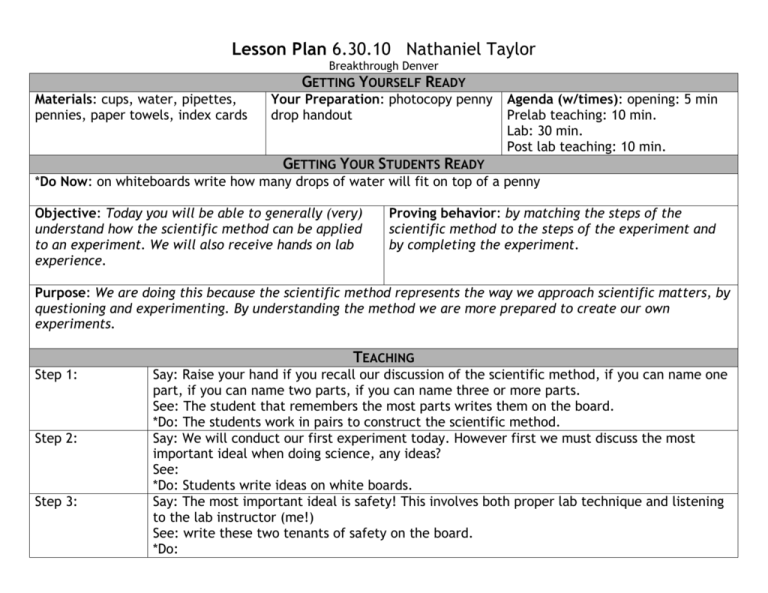
Lesson Plan 6.30.10 Nathaniel Taylor Breakthrough Denver GETTING YOURSELF READY Materials: cups, water, pipettes, pennies, paper towels, index cards Your Preparation: photocopy penny drop handout Agenda (w/times): opening: 5 min Prelab teaching: 10 min. Lab: 30 min. Post lab teaching: 10 min. GETTING YOUR STUDENTS READY *Do Now: on whiteboards write how many drops of water will fit on top of a penny Objective: Today you will be able to generally (very) understand how the scientific method can be applied to an experiment. We will also receive hands on lab experience. Proving behavior: by matching the steps of the scientific method to the steps of the experiment and by completing the experiment. Purpose: We are doing this because the scientific method represents the way we approach scientific matters, by questioning and experimenting. By understanding the method we are more prepared to create our own experiments. TEACHING Step 1: Step 2: Step 3: Say: Raise your hand if you recall our discussion of the scientific method, if you can name one part, if you can name two parts, if you can name three or more parts. See: The student that remembers the most parts writes them on the board. *Do: The students work in pairs to construct the scientific method. Say: We will conduct our first experiment today. However first we must discuss the most important ideal when doing science, any ideas? See: *Do: Students write ideas on white boards. Say: The most important ideal is safety! This involves both proper lab technique and listening to the lab instructor (me!) See: write these two tenants of safety on the board. *Do: Step 4: Step 5: Step 6: Say: Today we will conduct the ‘Penny Drop’ experiment. This will help us to understand how we apply the scientific method. See: *Do: ‘Penny Drop’ Experiment. This will be done individually with lots of guidance. Say: Let’s try and apply the scientific method to this experiment. There are generally the following eight parts. See: Show 8 scientific method cards. *Do: The students will try to put the eight cards in order. Say: Now lets put it all together by matching a few pieces of the method with the experiment we completed. See: Teacher holds up cards at random and asks students to volunteer to describe what part of the experiment used this part of the method. *Do: as described above PRACTICE *Structured Practice (3-4 additional examples led by teacher with gradually quickening pace, helping students approach automaticity by manipulating time, materials, and group size) Time: 30 min. Penny drop experiment. See attached handout. Materials: cups, water, pennies, pipette, paper towels Group Size: 2 Time: Example 2 Materials: Group Size: Time: Example 3 Materials: Group Size: Time: Example 4 Materials: Group Size: *Guided Practice (the proving behavior of the objective monitored by the teacher) Assignment: ( Criteria for Mastery: Independent Practice (Homework) Explain Homework: wksht, students will define observation and hypothesis in their own words and give 2 examples of each. CLOSURE Explain Closure: Exit Ticket: write down one or two ways we could adjust the experiment to test a different hypothesis
